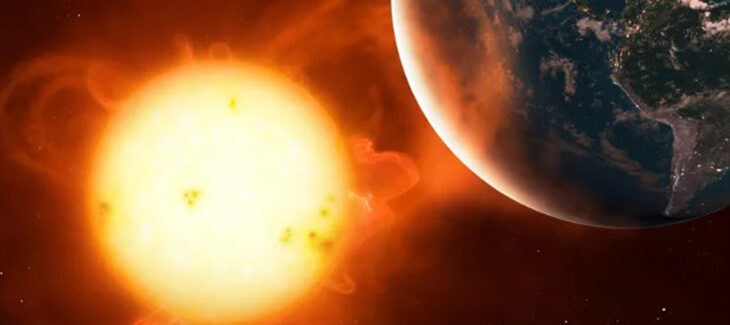Solar superstorms are powerful outbursts of solar energy that can significantly affect Earth’s magnetic field and atmosphere. These storms are caused by the release of stored magnetic energy in the Sun’s atmosphere, resulting in a sudden burst of radiation and charged particles. While smaller solar storms occur regularly, a superstorm can cause widespread disruption to critical infrastructure, including the Internet.
The most significant solar storm on record occurred in 1859, the Carrington event. This storm caused massive failures in telegraph systems, resulting in sparks and fires and even allowing messages to be sent without power. In 1989, a more minor solar storm caused a nine-hour power outage in Quebec, Canada.
Need for preparation and mitigation strategies
Efforts to prepare for solar superstorms are underway, with organizations such as NASA and the National Oceanic and Atmospheric Administration (NOAA) leading the charge. These agencies work to improve understanding of solar activity and its potential impact on Earth and develop early warning systems to alert critical infrastructure operators of approaching solar storms.
Currently, rumors about the problems of the “Internet apocalypse” are spreading on the Internet. They include unsubstantiated claims of an impending solar storm that will cause global internet disruption for the next decade and how NASA’s Parker Solar Probe, launched in 2018 to study the sun and weather up close, could save the internet “from death.” solar storm.”
Internet fears are also fueled by peer-reviewed research from earlier this year that suggested the Sun could reach its current peak of activity in 2024, a year earlier than previously thought. While scientists expect major solar storms to occur after solar activity peaks, no evidence supports the viral rumor that the next major solar storm will shut down the Internet.
The impact of large solar storms on power grids and communications systems is well documented, so “it’s good to be cautious and to do ongoing monitoring and assessment of the Sun-Earth system and the heliospheric system,” Vishal Upendran, a research scientist at Lockheed Martin’s Solar and Astrophysical Laboratory in California, reported Space.com. However, “more research is needed to make conclusive statements about the strength of solar storms,” he added.
Despite many claims about how the sun can kill the planet, there is no scientific prediction that a deadly solar storm will occur in 2025. We will have to be patient and take a wait-and-see approach to see when solar maximum occurs and how strong it will be.
Banner image: Ezzy Pearson Science journalist
Image credit: https://www.skyatnightmagazine.com






